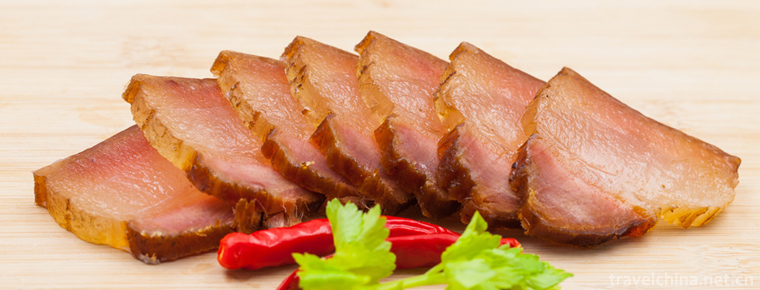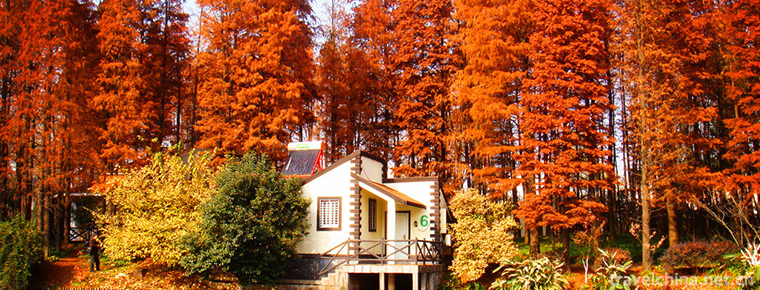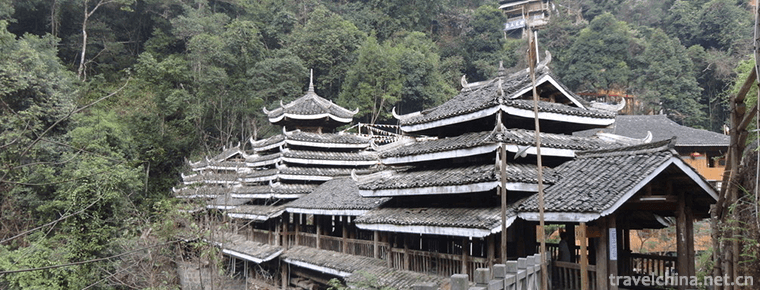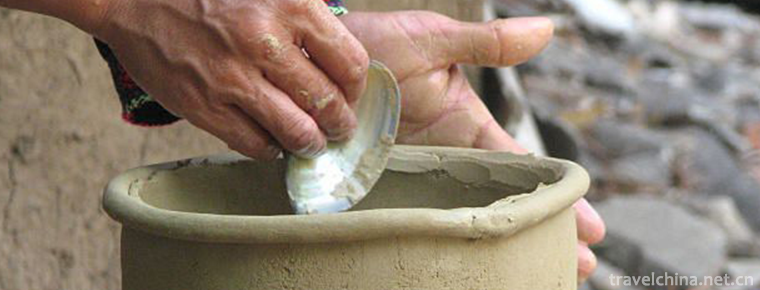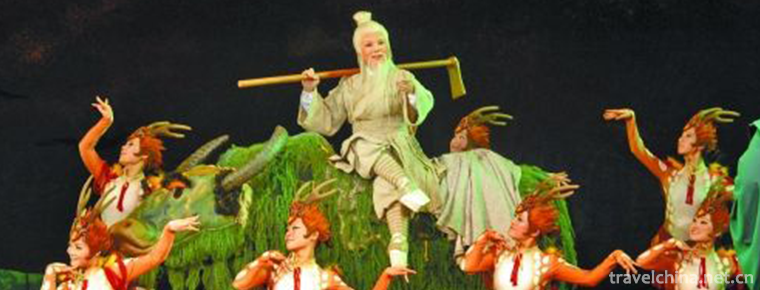Korean Huajiali
Korean Huajiali
The flower armor ceremony of the Korean nationality is one of the important rituals of the Korean nationality's birthday ceremony. Since ancient times, the Korean people have regarded respecting the elderly as an extremely important etiquette in their family and even in the whole social life. Korean compatriots hold birthday ceremonies on their 60th birthday, which are called "Huijia Banquet" or "Huajia Banquet". Huajia banquet is a birthday banquet held by the Korean people for the 60-year-old. According to the age of ancient cadres and branches, 60 years is regarded as a cycle unit. Therefore, 60 years old is called Zhou Jia or Huan Jia. The Korean people regard the age of 60 as a watershed in their life, so the Huajiali ceremony is particularly solemn, and it is an important life custom in the Korean people's life.
On May 23, 2011, Dandong City of Liaoning Province and Yanbian Korean Autonomous Prefecture of Jilin Province declared the Korean flower armor ceremony which was approved by the State Council and listed in the third batch of national intangible cultural heritage list (category: folklore; number: _-89).
historical origin
The Korean flower armor ceremony was formed from the mid-17th century to the mid-18th century.
It evolved from the custom of birthday celebrations and respect for the elderly. Originally born in the Royal family, it gradually spread to the common people. The custom of celebrating flower beetles has been inherited among the Korean people in China, mainly in the Korean Autonomous Prefecture of Yanbian and the areas inhabited by the Korean people in the three northeastern provinces. On Huajia banquet day, children held a banquet for the elderly, inviting relatives and friends to gather together, thanking their parents for their nurturing grace.
Folklore
A story is widely circulated among the people. In the Koryo era, the king issued a cruel law: people over 60, buried without death, known as "Koryo burial". A poor man surnamed Jin hid his father over 60 in a cave and secretly delivered meals to him every day without being noticed. When the emperor heard about the burial of Koryo, he felt that the law was too cruel, so he sent three difficult problems to the king of Koryo, which made him very difficult. When the old man in the cave heard the news, he told his son how to solve the three problems. The son came to the capital and told the King of Korea how to solve the problem. When the king heard this, he was overjoyed. After investigating the conspirator, he knew that he was a poor old man over the age of flower armor. Thus, King Koryo realized that the rich experience of the elderly is the wealth of the country. Since then, the old law has been abolished and the whole country has been instructed to respect and love the old. The old man returned home and was able to spend his old age with his family. Since then, Huajia Banquet has replaced "Koryo Funeral" and respecting the elderly has become a traditional virtue of the Korean people.
Folk etiquette
Korean Huajia Ritual has a relatively strict procedure, which is mainly divided into life-giving, life-giving, life-giving, life-making night, life-sharing table and other items. Traditional ceremonies are usually held in rural courtyards. Shouxing couples, relatives and their children must wear ethnic costumes. In ancient times, to participate in this more solemn celebration, people should wear white national clothes and develop to modern times. The requirements for clothes are not so strict. Everyone prefers to wear bright colored clothes, which sets off a festive atmosphere. Before giving the birthday banquet, the curtain or screen should be hung first, and then the couplet of birthday celebrations should be inscribed on the spot.
The most important part of the Korean flower armor ceremony is the sacrifice of life.
The process of toasting and saluting the longevity star is to offer one's life. First, the host introduced the life experience of the longevity star, then the eldest couple began to toast and salute, and then the second son and grandchildren consecutively sacrificed their lives. Following the celebration is entertaining birthday. At this time, the Korean compatriots'singing and dancing skills are fully developed. They sing or dance in front of the Shoutai. The top bottle birthday dance with Korean characteristics often appears in this impromptu performance of the celebration link. Guests or performers dance in glass bottles with half of their fruit wine on their heads. Dancers sometimes move lightly, sometimes hover in situ, dance stretching, skilled, not only shows Korean women can sing and dance, but also reflects the traditional virtues of respecting the elderly. Then there's the birthday party. The birthday star or his children toast and thank the guests. After the dinner, family members and relatives gathered in a room, singing and dancing all night long. On the occasion of the departure of relatives and friends from all walks of life, the host family should divide the birthday table and present the cakes and fruits on the birthday table to relatives and friends.
When arranging birthday feasts, there are rules in the place of dishes. Most of them are women who choose both children and three generations to live together and know the etiquette and customs two or three days in advance. On the morning of the birthday, in the hall, there are more than 50 kinds of necessary longevity foods such as pastries, candies, whole chicken, whole fish, large pieces of meat and cakes on the table. The longevity feast should highlight the shape of the cock, and the overall look is rich and beautiful, with distinct primary and secondary.
The most important part of the Korean flower armor ceremony is to dedicate one's life. The process of saluting and saluting the longevity star is to dedicate one's life. First, the host introduced the life experience of the longevity star, then the eldest couple began to toast and salute, and then the second son and grandchildren consecutively sacrificed their lives. Following the celebration is entertaining birthday. At this time, the Korean compatriots'singing and dancing skills are fully developed. They sing or dance in front of the Shoutai. The top bottle birthday dance with Korean characteristics often appears in this impromptu performance of the celebration link. Guests or performers dance in glass bottles with half of their fruit wine on their heads. Dancers sometimes move lightly, sometimes hover in situ, dance stretching, skilled, not only shows Korean women can sing and dance, but also reflects the traditional virtues of respecting the elderly. Then there's the birthday party. The birthday star or his children toast and thank the guests. After the dinner, family members and relatives gathered in a room, singing and dancing all night long. On the occasion of the departure of relatives and friends from all walks of life, the host family should divide the birthday table and present the cakes and fruits on the birthday table to relatives and friends.
In the Korean concept, "filial piety is the first line of action" is an important criterion to measure a person's moral level. Care for parents and filial piety is a virtue wherever and whenever. Huajia banquet is the etiquette for children to express filial piety to their parents, which helps to carry forward the traditional virtue of respecting the old and loving the old. Three generations are involved in the process of holding the Huajia banquet. The children should prepare a new dress and Huajia banquet for their parents. The grandchildren who wish to celebrate their birthday bow their heads to their grandparents with affection. Through this kind of caring etiquette, we can further enhance the relationship between father and son, grandchildren, daughter-in-law and parents-in-law.
Festival Culture
Respect the old and respect the old
Since ancient times, the Korean people have respected the elderly.
It is regarded as the most important etiquette and moral norm in the family and the whole social life. For example, adolescents must use honorific terms for their elders; smoking and drinking are not allowed in front of the elders; drinking on the back of the table is also necessary in non-drinking occasions; meals must be served to the elders and elders first. If you have guests, you should also set up separate tables for the elderly and guests. Food and delicacies should be placed in front of the elderly, the elderly can not eat before they move their chopsticks; the elderly, whether familiar or not, should greet them with courtesy; the grand "Huajia birthday banquet" held in the year of the elderly's "Huajia", that is, the 60th birthday, fully reflects this traditional virtue. The Korean people regard the age of 60 as a milestone in their life. Therefore, they attach great importance to Huajiali. At that time, children should make every effort to prepare dresses for the elderly and organize a grand birthday celebration ceremony - Huajia banquet. At the banquet, the old man was dressed in a formal dress, accompanied by the old man in the neighborhood, sitting in the middle of the longevity table. At the beginning of the birthday celebrations, children, close relatives, descendants and their spouses, according to the order of male, female and elder children, take the lead by eldest son, go to the birthday table in turn, kneel down to the elderly and offer a toast to each. Thank you for your parents'kindness and wish the old people a long and healthy life. And singing the song "Happy Birthday to Mother": the family gathered together to wish Mother Huajia a big birthday, joyful songs and laughter, warm currents pouring into my heart. Ah! Mother, wish you a long life, wish you a long life, son and daughter-in-law put on a banquet Huajia toast, wish you a long life. You have spared no effort for your children and children, and they remember in their hearts, wishing you a good life in your old age. Here's a glass of wine. Ah! Mother, I wish you a long life, I wish you a long life, my daughter and grandfather wish you a toast, I wish you a long life. You raise your grandchildren. They celebrate your birthday and dance happily. Wish you happiness for a long time. Ah! Mother, wish you a long life, wish you a long life, grandchildren stand in front of you salute, wish you a long life. (For example, on father's birthday, change "mother" to "father" when singing.
Seniors' Day
According to the Korean custom, 60 years is just a cycle unit, so the Korean people regard 60 years as a watershed on the road of life, and pay special attention to Huajiali ceremony. On Huajia banquet day, the sons and daughters held a birthday feast for the elderly. They invited relatives and neighbors to gather together to thank their parents for their kindness in raising them. The birthday ceremony begins in the order of children's growing up and their children's growing up. Relatives and friends from far and near pay homage to each other in turn. Then the children feast their relatives and friends who come to celebrate their birthday. They drink while eating, sing and dance to bless the old people's health and longevity. Since 1982, Yanbian Korean Autonomous Prefecture has also designated 15 August as the Old Man's Day.
On 15 August 2012,
It is the traditional festival of the Korean people in Yanbian, China - the Old Man's Day. Because it coincides with the 60th anniversary of the establishment of Yanbian Korean Autonomous Prefecture, the two "60" overlap, highlighting the meaning of "celebration, auspiciousness". On that day, the ceremony to celebrate the 60th anniversary of the establishment of Yanbian Korean Autonomous Prefecture was solemnly held in the auditorium of Yanji International Convention and Exhibition Art Center, where 60 Korean elderly people from all counties and cities in the prefecture celebrated the banquet. Among them are the soldiers of the People's Volunteer Army, the Red Flag bearers of the 38th National Day, the model workers at the state level, the representatives of the National People's Congress, and the elderly who have worked in all walks of life, participated in and witnessed the construction of autonomous prefectures.
Collective Huajia birthday banquet
On 3 August 2012,
Ning'an City, Heilongjiang Province, hosted a collective Huajia birthday banquet for more than 100 Korean elderly people in Qixi Square of Xingxing Village, Ning'an Town. 106 Korean elderly people from four local townships attended the birthday banquet in festival dress. Ning'an Korean elderly collective Huajia birthday banquet is held every four years.
There are many fastidious Korean Huajia banquets. Candies, meat, cakes and drinks are routinely placed on the birthday table. But chicken and fish are essential. A cock is placed in the middle of the front row of the table. The cock can't be slaughtered as usual. It needs to find a blood vessel to puncture and bleed, leaving no trace. At the same time, it should be cooked until 45 minutes, put on a beautiful shape, holding jujube in your mouth, chicken is auspicious meaning, jujube symbolizes the long-standing beauty; generally choose the handsome carp, must live fish, take more than one year of its meaning. In order to prevent the live fish from rolling and jumping, the carp should be drunk with alcohol in advance, and then put a lit cigarette on the mouth of the fish. When the carp breathes, the cigarette is also extinguished, which makes everyone laugh. Peaches are indispensable in fruit, which is also a symbol of longevity.
Although the Korean people like dog meat, but it is only folk food, not on the stage, the real banquet without dog meat. Although spicy cabbage is also a Korean delicacy, but spicy cabbage belongs to the ordinary family's salted vegetables series. If a family manages a flower armor banquet to come up with a spicy cabbage, it will be used as a laughing stock, indicating that the dishes are not enough to use salted vegetables to fill the number. There are two main foods for Huajia banquet, namely, making cakes and thousand-layer cakes. Cake making is the sticky cake of the Korean people, and the thousand-layer cake is similar to the cut cake, one layer of rice noodles, one layer of bean paste noodles. Such overlapping is called a thousand-layer cake.
Folk heritage
Dandong Korean Huajiali inheritors mainly distribute in Kuandian Manchu Autonomous County, Fengcheng City and Donggang City. The number of successors is decreasing. Dandong cultural department is stepping up the collection, collation and study of Korean flower armor ceremony, while increasing protection efforts. In the second batch of national intangible cultural heritage list published by the Ministry of Culture, the declared Korean Huajiali project is listed among them, and the national "non-heritage" project.
Heritage: Lv Changzhi. Born in April 1963, Korean, College degree. Learning mother tongue from elementary school is one of the few people in Ah Rong Banner who can not only speak Korean, but also write Korean. In 1986, he participated in the work and is currently the director of the Cultural Service Center of the New Korean Township in Arong Banner and the head of the Jindalai Art Performance Troupe in Arong Banner. He is good at singing and dancing and is keen on the inheritance and development of Korean national culture.

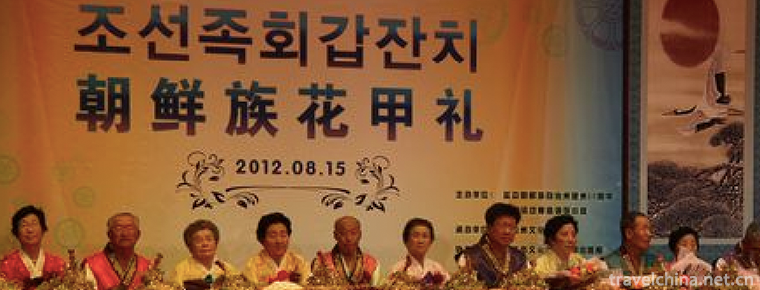
-
Chinese bacon
Bacon refers to processed meat processed by salting and then baked....
Views: 156 Time 2018-10-12 -
Qinghai Lake
In Qinghai Lake, the Tibetan language is called "the weming cloth" .
Views: 258 Time 2018-10-23 -
GongQing Forest Park
Gongqing Forest Park is located in Yangpu District, Shanghai. It is bordered by Huangpu River in the East and Military Road in the west. The total area of the park is 1965 mu, and the open public.
Views: 305 Time 2018-12-24 -
Longsheng Hot Spring Resort
Longsheng Hot Spring is located 32 kilometers northeast of Longsheng County. It takes 40 minutes to get to Longsheng Hot Spring by bus from the county town. Hot springs are gushed from rock strata 120.
Views: 183 Time 2019-02-06 -
Jingdezhen Handmade Porcelain Craft
Jingdezhen Handmade Porcelain Craft, the traditional handmade Porcelain Craft in Jingdezhen City, Jiangxi Province, is one of the national intangible cultural heritage..
Views: 122 Time 2019-05-08 -
Cloisonne Production Techniques
Cloisonne production skills, Chongwen District, Beijing, local traditional skills, one of the national intangible cultural heritage..
Views: 118 Time 2019-05-08 -
Primitive Pottery Making Skills of Li Nationality
The primitive pottery making technique of Li nationality, the traditional handicraft technique of Changjiang Li Autonomous County, Hainan Province, is one of the national intangible cultural heritages.
Views: 181 Time 2019-05-13 -
Salar Costume
The traditional dresses of the Salar nationality are bright and bright in color and full of national characteristics. Salar costumes have two characteristics, namely (1) Islamic color of costumes; (2).
Views: 127 Time 2019-06-11 -
Legend of Emperor Yan Shennong
Yan Emperor Shennong, one of the three emperors and five emperors, is one of the local folklores in Suizhou, Hubei Province, and is the national intangible cultural heritage. After Wa Fuxi, a stepdaug.
Views: 193 Time 2019-07-10 -
Extra tune
In addition to the form of opera, Yue Diao has two branches, namely, opera and puppet. In 1942, there was a severe drought in Henan Province. During this period, many cross-tone artists (such as Zhang.
Views: 263 Time 2019-07-16 -
Rongxian Giant Buddha
Located in the eastern suburb of Rongxian County, Sichuan Province, the Giant Buddha of Rongxian county is carved in the Tang Dynasty. It is a cliff carved statue of Sakyamuni, 36.67 meters high, 8.76 meters long, 12.67 meters wide, 12 meters high and 3.5 meters wide. It is the world's largest Sakyamuni Buddha (Modern Buddha)..
Views: 329 Time 2020-10-15 -
Four famous Chinese embroidery
Suzhou embroidery is famous for its fine stitches, elegant colors and fine embroidery. It has the characteristics of flat, light, even, harmonious, fine and dense. The theme is mainly about small animals. Such as "cat play", "wind through flowers",.
Views: 316 Time 2020-12-12
